Key Takeaways:
- Unlike traditional IVR systems that rely on rigid, menu-based interactions, AI voice bots are more advanced, more flexible, and deliver a much better customer experience as they can interact with users in a natural language.
- Key benefits of AI voice bots include 24/7 customer support, automated proactive outreach, increased agent productivity, effortless scalability without extra headcount, and major cost savings for call centers.
- Building an AI voice bot starts with choosing a provider, then mapping out conversation flows, configuring core components and voice settings, connecting telephony, integrating with your back-end systems, and testing it before going live.
- The top 5 AI voice bot providers in 2025 are VoiceSpin, Synthflow, Lindy, Cognigy, and Vapi. What sets VoiceSpin’s AI voice bot solution apart is its built-in telephony, instant scalability, and advanced AI speech analytics.
AI voice bots are changing the game for customer service and sales teams, automating voice interactions in ways previously unimaginable. While that might sound like the AI hype, it’s actually the reality – and in 2025, we’re seeing this voice automation already happening and delivering true value.
AI voice bots can interact with your customers or prospects like your most knowledgeable reps, handle interruptions intelligently, and even sound like you. On top of that, they can perform real actions beyond just answering FAQs and providing basic information. The best part? Building and deploying an AI voice bot doesn’t cost a fortune and doesn’t even require coding skills.
In this blog, we’ll walk you through the entire process of creating an AI voice bot for your business step by step. Plus, we’ll briefly explain how these solutions differ from IVR systems and how they can help your business. In the end, we’ll also list the top 5 AI voice bot providers worth your attention in 2025. Let’s get started!
What is an AI Voice Bot?
An AI voice bot is an AI-powered software system that can understand spoken language and respond with a natural-sounding speech using Automatic Speech Recognition (ASR), Natural Language Processing (NLP), and text-to-speech (speech synthesis) technologies. It can also be referred to as an AI voice agent, an AI phone agent, an AI voice assistant, or a voice virtual assistant, to name just a few.
AI voice bots are incredibly helpful in customer service and sales environments. They can answer inbound calls, respond to common questions, qualify leads, make cold calls, follow up with prospects, and perform multiple actions within integrated systems. Better yet, they can speak multiple languages fluently, handle thousands of calls at once, and contextually hand off conversations to human reps without losing any context.
AI Voice Bots vs. IVR Systems: What’s the Difference?
In short, though IVR (Interactive Voice Response) systems are getting smarter and more sophisticated, they are being gradually replaced by AI voice bots. Because AI voice bots are more advanced, more flexible, and deliver a much better customer experience. They can interact with users in a natural language – just like your human reps – without frustrating customers and requiring them to navigate a maze of options to get things done.
Here are the key differences between AI voice bots and IVR systems:
| AI Voice Bots | IVR Systems | |
|---|---|---|
| Underlying technology | AI-powered: Automatic Speech Recognition (ASR), Natural Language Processing (NLP), Text-to-speech (TTS), Large Language Models (LLMs) | Rule-based: traditional telephony, pre-recorded audio, Dual-Tone Multi-Frequency (DTMF) / touch-tone inputs, basic keyword recognition |
| Interaction style | Conversational: can understand the user’s intent and context and respond naturally, allowing for a two-way, free-flowing dialogue | Menu-driven: users navigate a pre-recorded phone menu by pressing buttons on their phone keypad or by saying specific keywords |
| User experience | Natural: can handle interruptions intelligently, respond in a human-like way, and provide a highly personalized experience | Rigid: users are often forced to listen to a long list of options; the experience is impersonal, frustrating, and may feel robotic |
| Error handling | Graceful: can recognize when it doesn’t understand, ask clarifying questions, and transfer to human agents with full context | Poor: if a user’s input isn’t recognized or a button isn’t pressed, the system often repeats the menu |
| Integrations | Advanced: can integrate with CRMs, calendars, and other business systems to retrieve data and perform actions | Basic: typically has limited or static integrations with back-end systems; data retrieval is often basic |
| Use cases | Complex queries: can handle complex, multi-turn conversations, troubleshooting, and transactional tasks (e.g., scheduling, processing returns) | Simple tasks: best for simple, routine tasks like routing calls, checking account balances, or providing static information (e.g., store hours) |
Key takeaway: IVR systems might still be a good option if you simply want to optimize call routing and deliver very basic self-service. AI voice bots are much more flexible: they can handle more complex requests, provide personalized responses, and create a more natural customer experience.
What are the Benefits of AI Voice Bots?
- Deliver 24/7 customer support: According to Salesforce, 83% of customers want to interact with someone immediately when they contact a company. AI voice bots can answer inbound calls around the clock, even when your human reps aren’t there, helping your customers get information or resolve issues instantly – with no wait times and no frustration.
- Automate proactive outreach: AI-powered voice agents aren’t just reactive. Many AI voice bot solutions out there can also initiate and handle outbound calls independently, helping you completely automate cold calling, lead qualification, reminders, survey collection, follow-ups, upselling campaigns, and other proactive outreach initiatives.
- Free up your human resources: AI voice bots can easily handle FAQs, answer queries, schedule appointments, process orders, modify subscriptions, pre-qualify leads, update CRM records, and perform other actions. The outcome? While these tasks can successfully be automated, your human reps get more time to focus on higher-value activities.
- Scale operations without hiring more reps: With the ability to manage hundreds or even thousands of simultaneous calls and handle customer interactions in different languages, AI voice bots allow you to scale your customer service or sales operations without having to bring in and train additional human reps.
- Reduce your call center costs: Based on data from Teneo.ai, interactions handled by a voice bot cost around $0.40 per call, compared to $7 to $12 per call when handled by a human agent (depending on complexity and region). That brings significant cost-savings, especially for businesses with high call volumes.
Recommended reading: Customer Service AI Voice Bots: The Ultimate Guide
How to Build an AI Voice Bot Step by Step
Now, let’s take a closer look at how to set up your own voice agent step by step:
1. Choose an AI voice bot provider
Start by choosing a provider that aligns with your specific business needs and technical capabilities. When evaluating providers, you may want to consider factors like:
- Inbound/ outbound calling capabilities: Can the solution automate both inbound and outbound calls? If you’re looking to build an AI voice bot for outbound sales and lead qualification, outbound calling capabilities are critical.
- Ease of use and intuitive interface: Want to build an AI voice agent quickly and effortlessly? Look for providers offering visual flow builders and no-code drag-and-drop interfaces, allowing you to set up your voice bot without tech knowledge and coding skills.
- Concurrent calls and scalability: If you manage large call volumes, look for a solution that is able to handle hundreds/ thousands of concurrent calls and easily scale based on your growing needs.
- Multiple language support: Running a global business and want to support your customers in different languages? Look for providers that allow you to build multilingual voice bots.
- Integration capabilities: How easy can the bot connect to your existing systems like CRM, ERP, calendar, and other business tools? Integrations are critical as they allow your bot to perform specific actions within these systems.
- Voice options: Look for solutions offering a range of natural-sounding voices to make sure your bot sounds like a real human. Plus, some providers offer voice cloning options, enabling the bot to speak with the cloned voice.
- Contextual hand-offs to human agents: To ensure a smooth customer experience, consider providers that allow you to escalate conversations from a bot to human agents while preserving the context of the interaction.
- Reporting and analytics tools: Want to be able to stay on top of your voice bot’s performance? Go with a solution that offers tools to track specific metrics and KPIs, analyze conversations, and identify improvement opportunities.
2. Create a new project/ bot/ agent/ workspace
Once you’ve chosen a voice bot provider, sign up/ log in and create a new voice bot environment (look for options like ‘New Project’, ‘New Agent’, ‘New Voice Bot’, ‘New Workspace’, etc.). That’s where you’re going to manage conversation flows, settings, bot integrations, and testing.
Next, give your bot a clear, distinctive name (e.g., Customer Service Bot’ or ‘Lead Qualification Assistant’).
3. Map out conversation flows
This is the design phase, where you basically plan out the entire user journey and define how your bot will interact with your customers or prospects. Think through how a typical conversation should go – from greeting to resolution:
- What does the bot say when a user first interacts?
- What data does the bot need to fulfill the request? How will it collect it?
- What happens if the bot doesn’t understand?
- How should the bot handle off-topic questions?
- How does the bot handle interruptions?
- When should the bot transfer the conversation to a human agent?
- How does the bot end the conversation?
You can use a visual flow builder or script-based logic, depending on the platform. Plus, many providers offer pre-built voice bot templates with ready-to-use conversation flows designed for common use cases like customer support or lead generation.
These templates help you build an AI voice bot much faster without having to start from scratch, as they typically already come with predefined conversation flows, sample dialogues based on industry best practices, call escalation rules, and more. You simply pick a template and customize it to meet your unique needs.
4. Configure core components and settings
AI voice bot providers that leverage RAG (Retrieval-Augmented Generation) allow you to upload your internal knowledge sources and train your bot on your company-specific data. With RAG, your voice bot can fetch relevant information in real time instead of relying solely on the LLM’s general training data. That allows the bot to provide more accurate answers while also reducing AI hallucinations. Typically, you’ll have the option to upload files in different formats (like text files, spreadsheets, and PDFs), entire websites, or specific URLs.
Based on the provider, you may also be able to configure things like:
- LLMs and model settings
- Language and sound
- Voice characteristics
- Background noise, etc
5. Connect telephony
- Acquire a phone number: Your provider might offer numbers directly or you might integrate an existing phone number.
- Configure inbound calls: Set up your phone system to route incoming calls to your bot’s designated endpoint (often an API endpoint or a specific SIP trunk provided by the platform).
- Set up outbound calls: If your voice bot needs to make outbound calls, configure the platform to initiate these calls.
- SIP trunking/voice connectors: Many platforms use SIP trunks or dedicated voice connectors to establish the audio connection between the phone network and your bot.
What’s important to understand here is that not all AI voice bot providers come with built-in telephony.
E.g., VoiceSpin and Lindy offer their own integrated telephony services, including virtual phone numbers (local/ international), SIP trunking, inbound/ outbound call support, and call routing. These are ideal if you need a fully operational AI voice bot that can make and receive phone calls without extra components. Platforms like Synthflow and Cognigy focus primarily on the conversational AI engine and require you to bring your own telephony infrastructure.
6. Integrate with your business ecosystem
This is where your AI voice bot turns from a simple conversational voice agent into a truly powerful automation tool that can actually perform real actions. Based on your business needs, you may want to connect it to your:
- CRM system: to fetch customer details, log interactions, and create leads
- ERP system: to check order statuses, inventory levels, or process returns
- Helpdesk system: to create or update support tickets automatically
- Calendar/ scheduling software: to schedule or reschedule appointments
- Payment gateways: to process payment transactions
Fortunately, many AI voice bot providers offer pre-built connectors to these tools. With platforms without direct connectors, you’ll use API calls or webhooks to exchange data.
7. Test and launch your AI voice bot
Before your voice bot goes live, test it internally by simulating real conversations to make sure everything works smoothly and customers get a positive experience when interacting with your bot. Here’s what to pay attention to:
- Real user scenarios: Simulate real user conversations to test the experience.
- Edge cases: Test unexpected user inputs, interruptions, and multi-turn queries.
- Error handling: Ensure fallbacks, re-prompts, and live rep escalations work properly.
- Load testing: Simulate concurrent calls to validate stability and performance.
- Audio quality: Pay close attention to the bot’s voice, pacing, and clarity.
- Integrations: Verify that all calls to third-party apps are successful and data is retrieved/updated accurately.
You might also want to deploy a voice bot with a limited group of real users to gather feedback based on real-world behavior. On top of it, once the bot is deployed, make sure to regularly review call transcripts to see how the bot is performing and where improvements are needed.
Top 5 AI Voice Bot Providers in 2025
| Key Features | Best for | |
|---|---|---|
| VoiceSpin |
|
Mid-sized and enterprise businesses looking to automate customer support, lead qualification, and sales calls |
| Synthflow |
|
Small to mid-sized businesses and agencies looking to automate their customer support interactions |
| Lindy |
|
Small to mid-sized businesses looking to automate sales calls, customer support, recruiting, or client onboarding |
| Cognigy |
Large-scale businesses and enterprises looking to automate their customer service and support operations |
|
| Vapi |
Developers, AI consultants, and agencies building white-labeled voice AI solutions for their clients |
|
Recommended reading: 10 Best AI Voice Agents for Business in 2025
Set up Your AI Voice Bot for Customer Service and Sales Automation with VoiceSpin
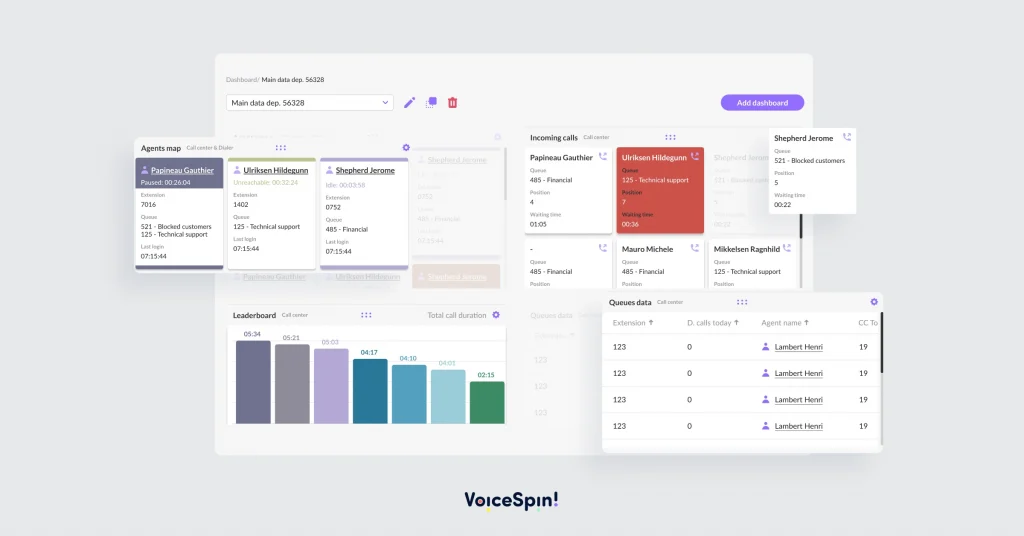
With more customers demanding instant support and more businesses looking to automate operations while also reducing costs, there’s never been a better time to invest in AI voice bots. These solutions can streamline your customer support, lead qualification, appointment booking, and proactive outreach – without you having to hire more agents or burning out your best reps.
Ready to get started with AI voice bots? Here’s why VoiceSpin’s AI voice bot solution might be the right option for your business:
- Built-in telephony: comes with a full-suite call center platform and built-in telephony
- Inbound/ outbound call automation: answers and initiates calls independently
- Smart interruption handling: handles interruptions like a real human
- Contextual call hand-offs: escalates calls to human reps with full context
- Instant scalability: handles thousands of calls at once and scales on demand
- Third-party integrations and APIs: connects with your tech stack to perform actions
- AI speech analytics: analyzes 100% of calls and monitors custom metrics and KPIs
Book a demo call now to see how it works and how it can automate your customer service and sales operations.
Frequently Asked Questions
Is there any difference between AI voice bots and AI voice agents?
Don’t be confused by the terms ‘AI voice bots’ and ‘AI voice agents’ – they literally mean the same thing: AI-powered systems that can engage with users in natural spoken dialogue. The preference for ‘AI voice agents’ by some companies merely serves to emphasize the system’s ability to operate independently and perform actions beyond just answering common questions. But ultimately, both terms describe an AI system for automating voice interactions.
How does an AI voice bot work?
An AI voice bot takes spoken user input, converts it to text using Automatic Speech Recognition (ASR), and analyzes it through Natural Language Processing (NLP) to understand user intent. Then, it generates voice responses using text-to-speech (TTS) technology. An advanced voice AI agent can respond in a natural, conversational way and even match the user’s speaking style. AI voice bots can also integrate with back-end systems and perform actions (like updating CRM records, processing orders, or booking appointments), all while maintaining strong data security.
What are the best AI voice bots for customer service and sales?
That depends on what exactly you’re looking for. In general, if you need a solution that can automate both inbound and outbound calls, handle simultaneous interactions, integrate with back-end systems, perform real actions, and speak multiple languages – VoiceSpin, Synthflow, Lindy, Vapi, Bland AI, Cognigy, and Regal are some of the most advanced AI voice bot solutions you might want to consider.

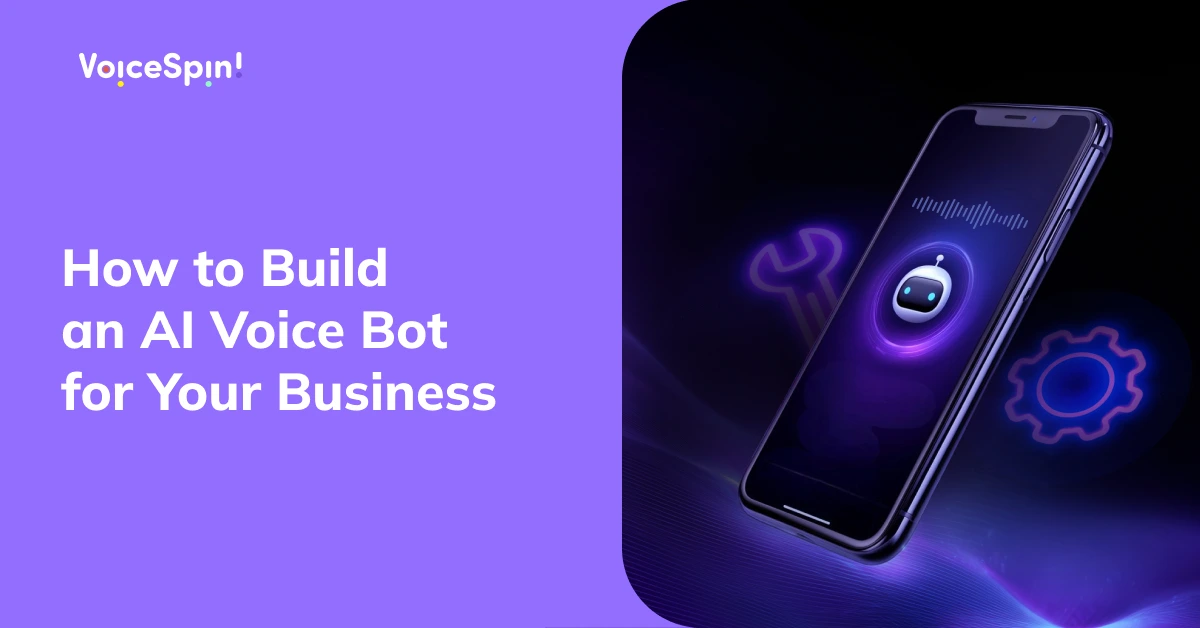
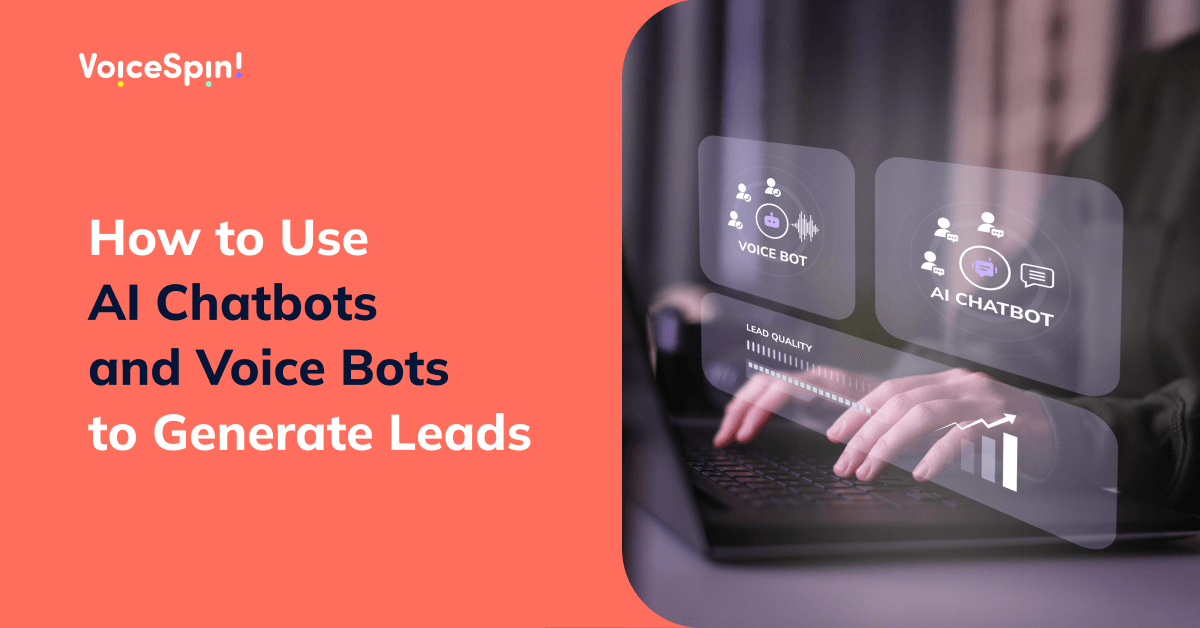
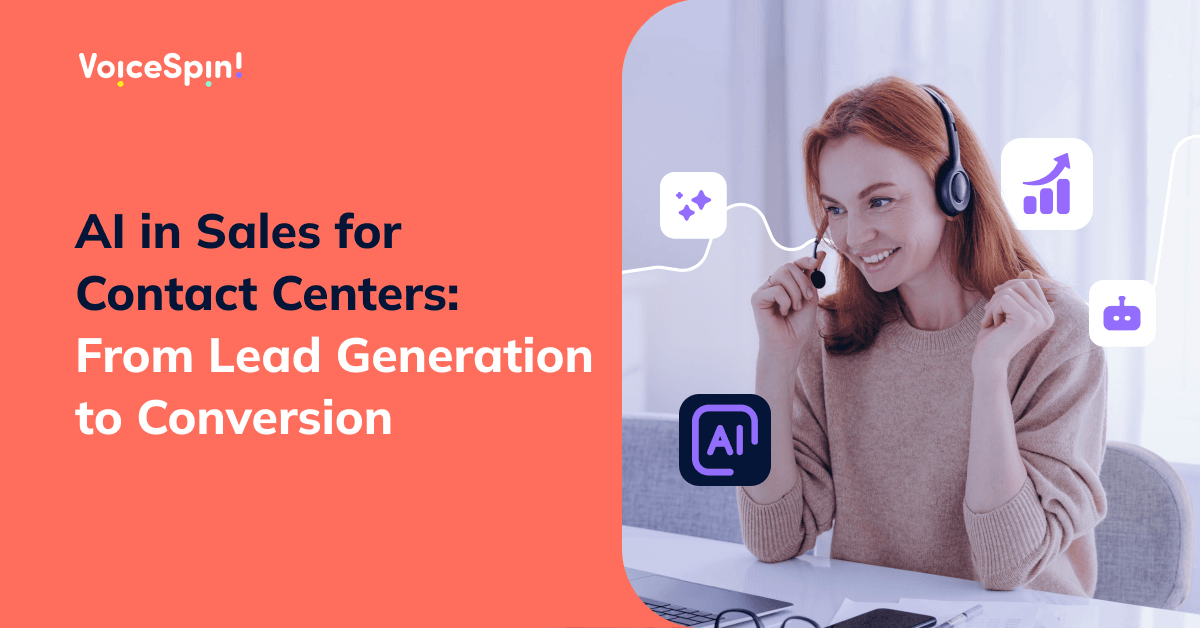
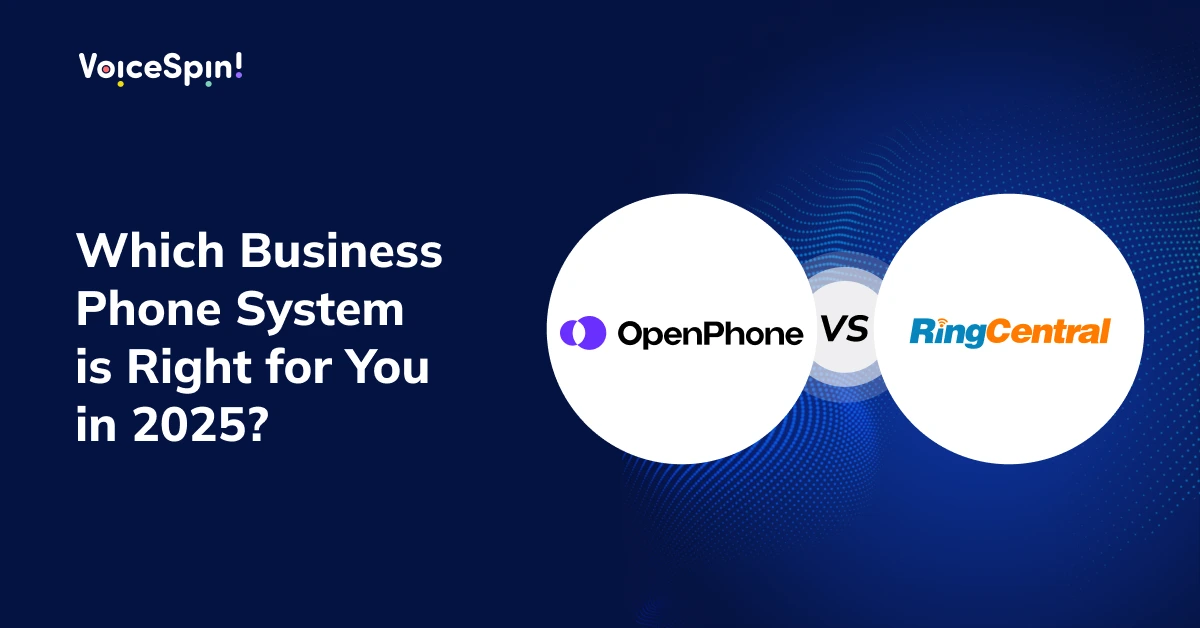
 +18889082995
+18889082995
 +442036084160
+442036084160
 +97237237006
+97237237006